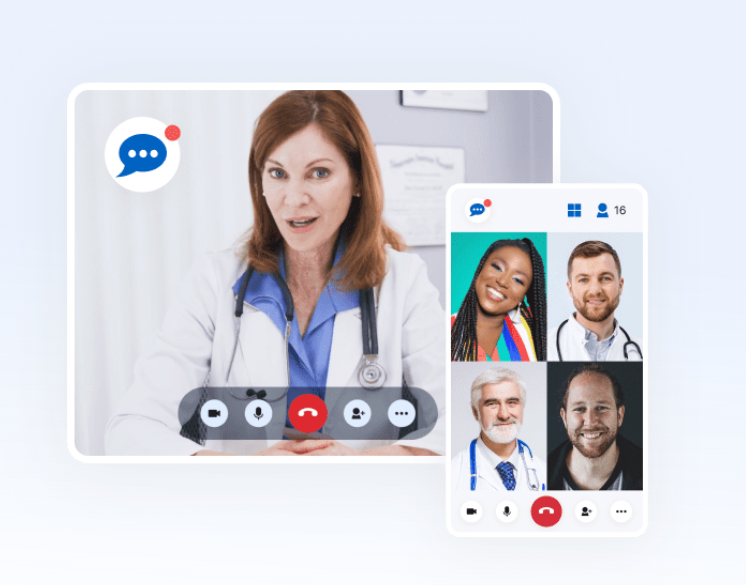The healthcare industry is undergoing a dramatic transformation, fueled by rapid advances in technology. Among these advancements, AI-powered telemedicine applications are emerging as a powerful tool to reshape the landscape of remote patient care. With the ability to enhance diagnostics, personalize treatment, and improve accessibility, these intelligent platforms are becoming essential in modern healthcare delivery.
In this article, we’ll explore how artificial intelligence (AI) is driving innovation in telemedicine, the benefits it brings to both providers and patients, and what it takes to build and implement these cutting-edge solutions. Whether you're a healthcare provider, entrepreneur, or investor, understanding the role of AI in telemedicine is key to staying ahead in the evolving digital health ecosystem.
The Evolution of Telemedicine: From Video Calls to AI-Driven Platforms
Telemedicine software development has come a long way. Initially, telemedicine platforms were simple video conferencing tools designed to connect doctors and patients remotely. Today, they have evolved into sophisticated ecosystems powered by AI, data analytics, wearable integrations, and electronic health record (EHR) systems.
Modern telemedicine application software development combines machine learning (ML), natural language processing (NLP), computer vision, and predictive analytics to offer a more comprehensive, data-driven, and personalized healthcare experience.
The integration of AI is no longer a luxury—it's quickly becoming a necessity.
Key Benefits of AI in Telemedicine Apps
1. Enhanced Diagnostics and Clinical Decision Support
AI algorithms can process vast amounts of patient data—symptoms, history, lab reports, imaging—and provide clinical decision support tools (CDST) that help doctors make more informed diagnoses. In some cases, AI tools can detect anomalies in radiology scans (e.g., X-rays or MRIs) with accuracy levels that rival or exceed human specialists.
For example, AI chatbots equipped with NLP can triage patient symptoms, suggest probable causes, and recommend next steps, even before a human doctor gets involved.
2. Remote Monitoring and Predictive Analytics
AI-powered telemedicine apps can integrate with wearable devices to continuously monitor vital signs like heart rate, blood pressure, glucose levels, and oxygen saturation. Through machine learning, the system can detect unusual patterns and alert both patients and physicians in real time.
Predictive analytics can also identify patients at risk of chronic diseases such as diabetes or cardiovascular conditions, enabling early intervention and prevention strategies.
3. Personalized Treatment Plans
AI can tailor treatment recommendations based on each patient’s unique medical history, genetics, lifestyle, and preferences. For instance, medication dosages and lifestyle advice can be dynamically adjusted according to real-time data from wearable devices or patient-reported outcomes.
This personalization not only improves outcomes but also enhances patient satisfaction and adherence to treatment.
4. Increased Access to Care in Remote and Underserved Areas
One of the most transformative aspects of AI in telemedicine is its potential to democratize healthcare. Patients in rural or underserved communities often struggle to access specialists. AI can fill these gaps by providing preliminary consultations, translating between languages, or assisting local caregivers with decision support.
AI-enabled virtual assistants can also offer 24/7 support, reducing the need for in-person visits and easing the burden on overstretched healthcare systems.
5. Operational Efficiency and Cost Savings
AI can automate administrative tasks like appointment scheduling, billing, and medical coding, freeing up time for providers to focus on patient care. NLP algorithms can also transcribe and summarize consultations automatically, making documentation seamless.
This improves clinical workflow, reduces operational costs, and enhances the scalability of telemedicine software development services.
AI Use Cases in Telemedicine
Here are several real-world applications of AI in telemedicine apps:
- Symptom Checkers: Apps like Ada Health or Babylon Health use AI to assess symptoms and suggest next steps.
- Mental Health Support: AI chatbots like Woebot offer cognitive behavioral therapy (CBT) via natural conversation.
- Chronic Disease Management: AI platforms monitor diabetes, heart failure, or COPD, providing alerts when thresholds are breached.
- Radiology and Imaging: AI tools assist in interpreting X-rays, CT scans, and MRIs remotely.
- Speech and Language Analysis: Used in neurological assessments, AI can detect early signs of Alzheimer’s or Parkinson’s disease.
Challenges and Considerations in AI-Powered Telemedicine Development
While the potential is vast, AI integration also comes with challenges:
1. Data Privacy and Compliance
AI applications in healthcare deal with sensitive patient data. Ensuring HIPAA, GDPR, and other regulatory compliance is critical during telemedicine software development. This includes robust encryption, secure data storage, and transparent user consent practices.
2. Bias and Accuracy
AI models are only as good as the data they’re trained on. Bias in datasets can lead to inaccurate or even harmful recommendations, especially for underrepresented populations. Continuous model validation and diverse training data are crucial.
3. Integration with Legacy Systems
Many hospitals still use legacy EHR systems. Integrating AI tools with existing infrastructure can be complex and requires deep expertise in telemedicine software development services.
4. User Experience and Trust
For widespread adoption, patients and providers must trust AI systems. The UX/UI should be intuitive, and AI decisions must be explainable—especially in critical care scenarios. Partnering with a specialized telemedicine software development company ensures that trust and usability are designed into the product.
Key Features of AI-Powered Telemedicine Apps
When developing AI-enhanced telemedicine software, the following features are essential:
- AI Chatbots and Virtual Assistants
- Automate patient intake, appointment scheduling, and FAQs.
- Remote Patient Monitoring Dashboard
- Aggregates and visualizes data from IoT health devices in real time.
- Clinical Decision Support Tools
- Offer diagnosis suggestions, drug interactions, and risk assessments.
- Natural Language Processing (NLP)
- Converts voice notes or chat into structured medical records.
- Predictive Analytics
- Anticipates complications, hospital readmissions, or medication non-adherence.
- Multilingual Support
- Bridges communication gaps using AI-powered translation.
How to Build an AI-Powered Telemedicine App
Creating a successful AI telemedicine app requires more than coding. It involves medical expertise, regulatory knowledge, and a robust tech stack.
Step 1: Partner with an Experienced Telemedicine Software Development Company
Start by choosing a vendor with deep domain knowledge in healthcare. They’ll ensure regulatory compliance, interoperability with EHRs, and industry best practices.
Look for a telemedicine software development company with a portfolio of AI and healthcare solutions. They should offer end-to-end services—from ideation to post-launch support.
Step 2: Define the Use Cases and Scope
Identify the problems your app will solve—diagnosis, monitoring, mental health, or workflow automation. Define the user roles (doctors, patients, admin staff), their journeys, and the desired outcomes.
Step 3: Choose the Right Tech Stack
AI telemedicine apps require:
- Frontend: React Native, Flutter (for cross-platform usability)
- Backend: Node.js, Django, or Ruby on Rails
- AI/ML Frameworks: TensorFlow, PyTorch, OpenAI APIs
- Database: PostgreSQL, MongoDB (with secure cloud hosting)
- APIs: For EHR, wearable integration, and third-party services
Security and scalability should be built into the architecture from day one.
Step 4: Build and Train AI Models
Use anonymized datasets to train models for diagnostics, NLP, or patient monitoring. Collaborate with healthcare professionals to fine-tune the accuracy and ensure clinical relevance.
Step 5: Test, Comply, and Launch
Conduct thorough usability testing with both patients and providers. Ensure the app complies with HIPAA, GDPR, and any local health data laws. After launch, continuously monitor AI performance and user feedback to improve accuracy and engagement.
The Future of AI in Telemedicine
The future of AI in telemedicine is promising, with new possibilities emerging every day:
- Digital Twins of Patients: AI can simulate patient health scenarios to predict outcomes of treatments.
- Emotion Recognition: Advanced NLP can detect emotional states during consultations, improving mental health care.
- Voice Biomarkers: AI may identify diseases like COVID-19 or Parkinson’s through voice patterns.
- Federated Learning: AI models learn from decentralized data sources, enhancing privacy while improving accuracy.
As innovation continues, telemedicine apps will become even more autonomous, proactive, and intelligent—reshaping how healthcare is delivered worldwide.
Conclusion
AI-powered telemedicine apps are not just a trend—they are the next frontier in healthcare innovation. They improve diagnostic accuracy, enable 24/7 remote care, personalize treatment, and reduce costs. However, their success hinges on thoughtful implementation, ethical design, and expert development.
If you’re considering building an AI-based telemedicine platform, partnering with a trusted telemedicine software development company is the first step. With the right team and strategy, your app can not only meet today’s healthcare demands but also shape the future of patient care.
Looking for expert guidance? Choose a reliable telemedicine software development services provider with a proven track record in healthcare and AI innovation to turn your vision into reality.

